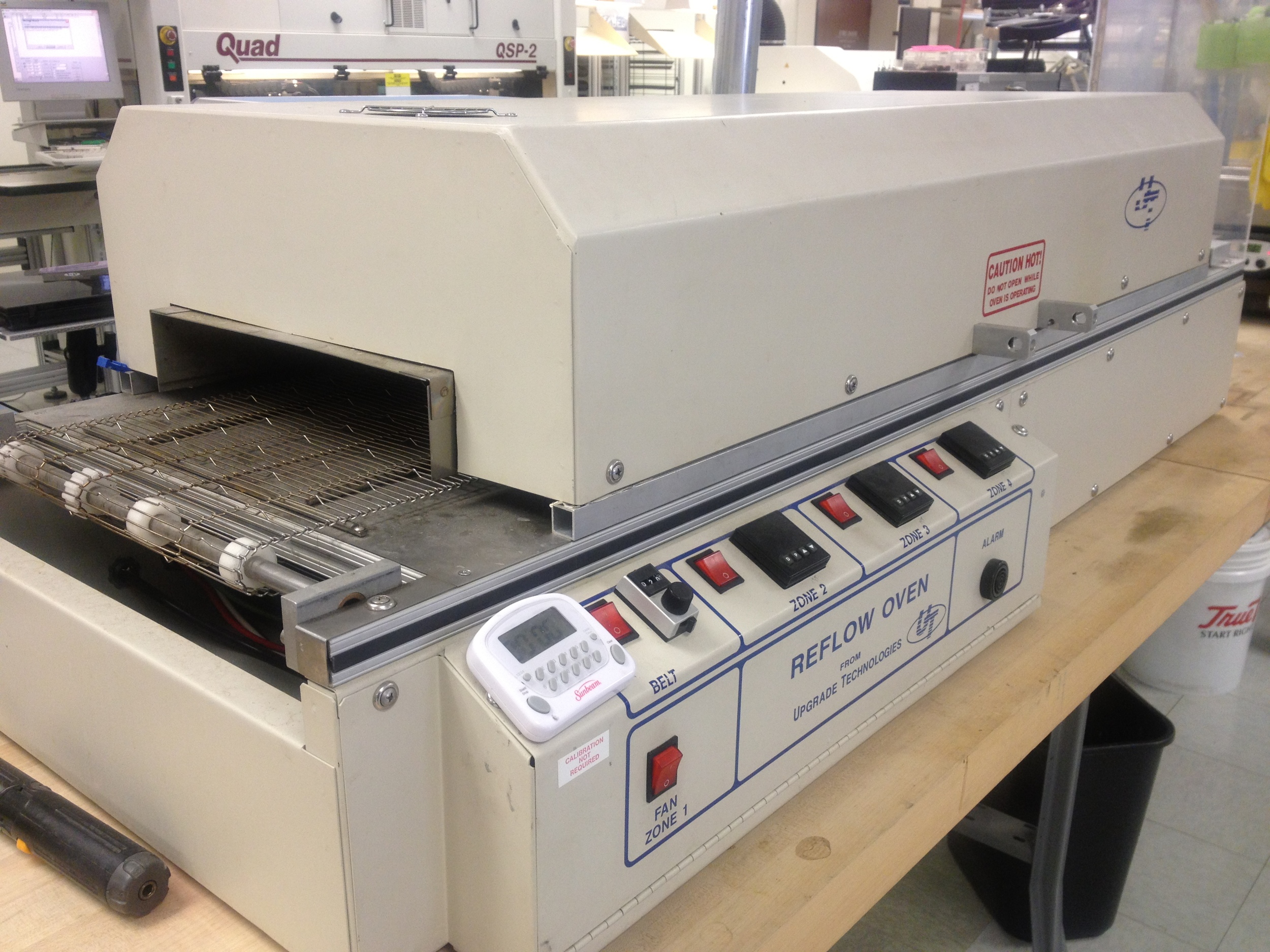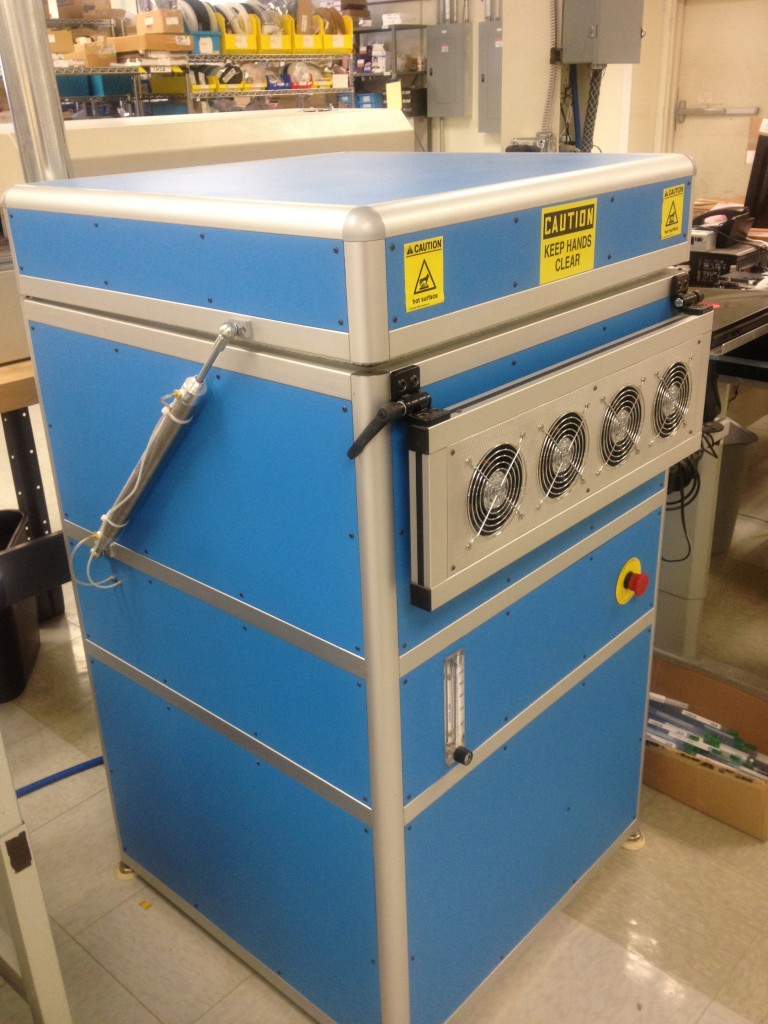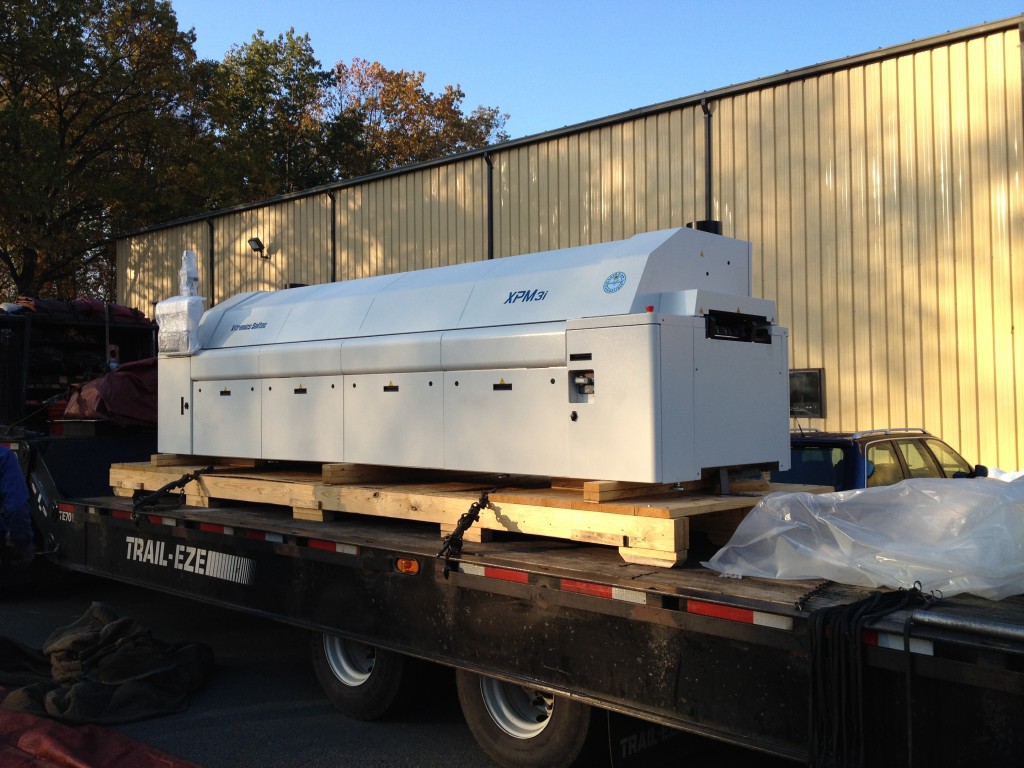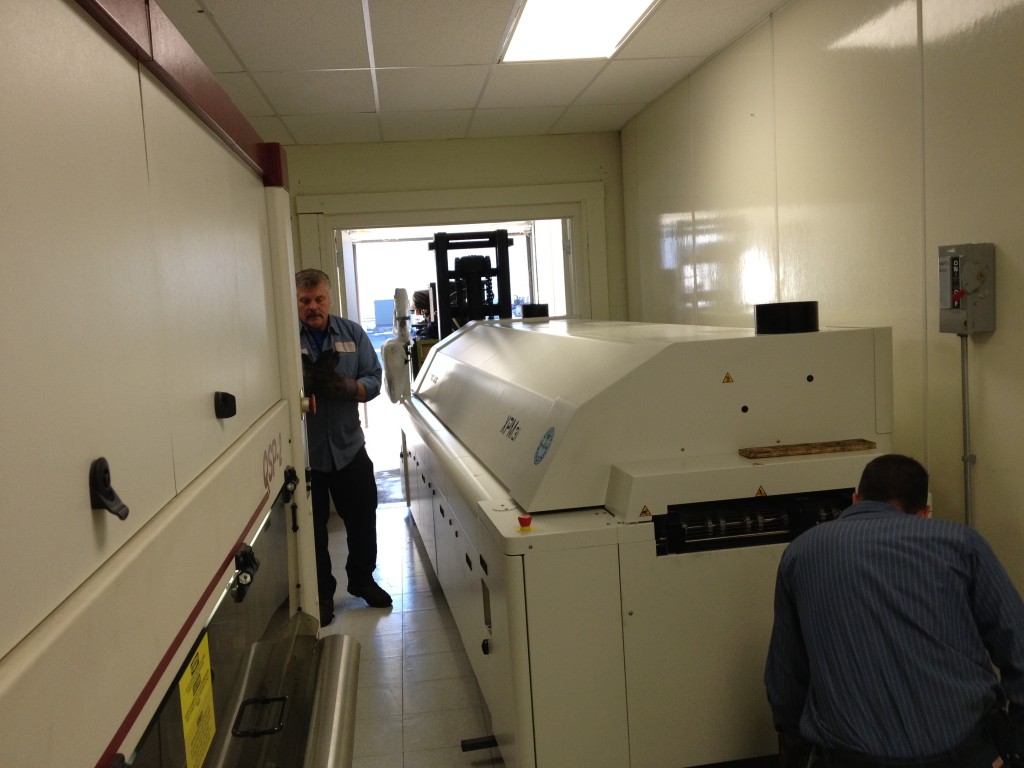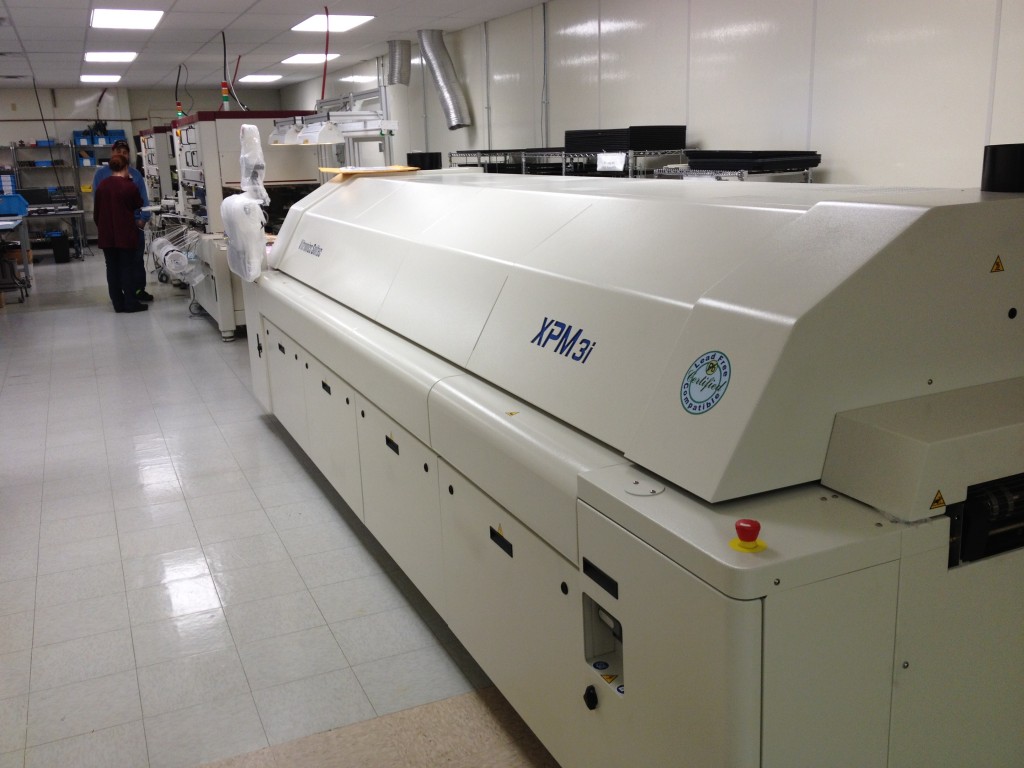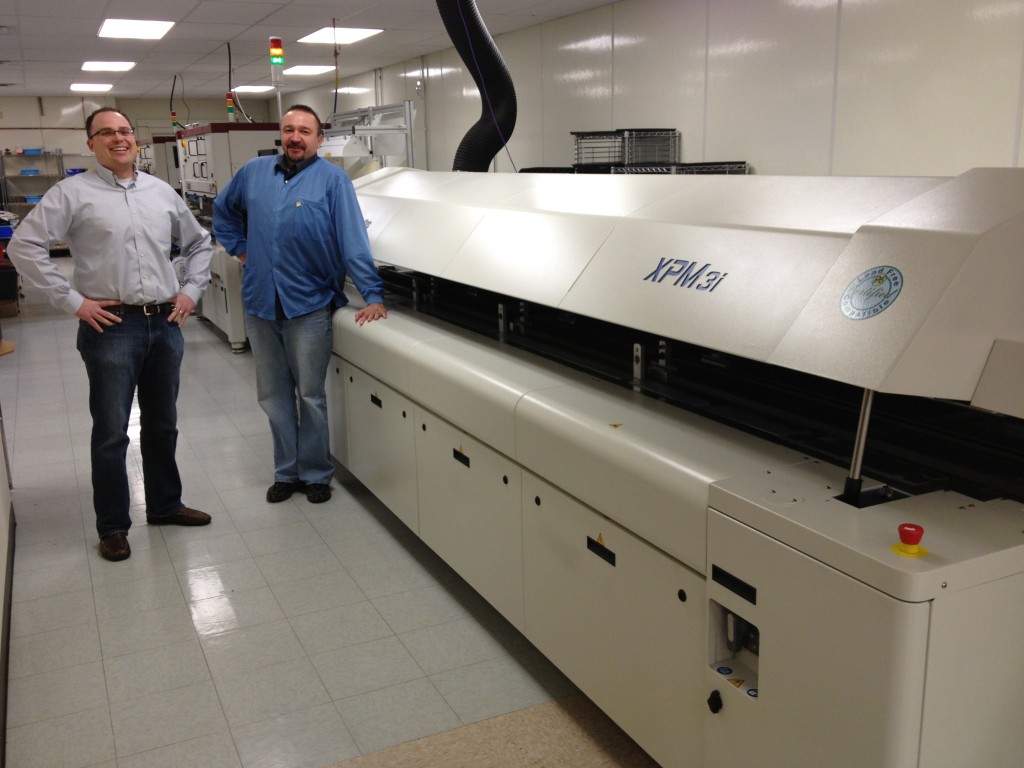During the SMT process, a thin layer of solder paste is "printed' onto the circuit board using a stencil. The stencil allows us to apply a very precise amount of solder paste on the circuit board, exactly where we need it. Components are then placed onto the circuit board, on top of the solder paste. But once the components are in place, you still need to solder all of them. That's where the reflow oven comes in. WAi has a long history with reflow ovens. Like most contract manufacturers it all started with a toaster oven. Yes. Literally a toaster oven. Place the circuit board inside, close the door, set the timer, and come back. This, believe it or not, worked fairly well for very simple assemblies. But it obviously has its problems. So next came along this guy...
This style of oven is called a "bench top reflow oven". As its name implies, it sits on a bench. You can plug it into single phase 220VAC and you can reflow the solder paste on circuit boards. The trouble with this reflow oven is that it cannot hold its temperature very well. Once you start to load up the oven with circuit boards, those circuit boards act like ice cubes in hot soup. The temperature inside the reflow oven wants to drop dramatically and the oven does not have the horse power to maintain its temperature. What would result were inconsistent reflow and on some occasions having to run circuit boards through the oven more than once.
It was obvious to WAi that we needed something better. Especially as the complexity of the circuit boards we were building kept increasing and this old style of reflow oven had no capability to run what's known as a "double sided" circuit board. (Basically, there are surface mount components on the top and the bottom of the circuit board. You process one side at a time. When you reflow the second side of the circuit board, all of the components on the bottom must hang freely in the air, allowing the surface tension of the solder to hold them in place)
But WAi had another problem. They were located in the small, lovely, town of Worthington, MA. It's a beautiful town in the Berkshire Mountains but there is little convenience for a manufacturer. There is no 3 phase power, UPS only comes once a day for delivery and pickup, and the fastest internet you're going to find, even today, is probably 56k. After a long a hard search, WAi found this guy, affectionately known as "R2D2".
While it might not look like much, this is actually a very capable, machine. It served us well for a long time. But as we were growing, it just could not keep up with the demands we were placing on it. It could perform one reflow cycle every 8 minutes or so. So the speed we could process boards was largely dependent on how many boards we could fit into the chamber. Smaller boards would obviously be faster, but sometimes we'd build very large boards that took very little time to run through our pick and place machines and then they'd be sitting around waiting to be put into the reflow oven.
Ultimately, towards the end of using this machine, it started to give us some real headaches. Many of the joints were not reflowing properly and we were spending too much time soldering many of our products by hand. Enough was enough. We needed a real reflow oven. Thankfully, WAi had moved into a new facility that offered a full compliment of power choices. Including our beloved 3 phase 480VAC. So we picked up this guy.
Enter the Vitronics Soltec XPM3 820. This picture was taken the day it arrived. This reflow oven is about 16 feet long by 4 feet wide. It can reflow any type of circuit board you can imagine. Thick - Thin - Leaded - Lead-Free - Double Sided, there's nothing we could not process with this machine.
Before it arrived we had prepared our site to bring it in. This machine is so large that we had to clear out all sorts of areas to receive it properly without damaging our facility or the machine itself.
The rigging company did a great job. They were very careful about not damaging anything. As you can see in this picture, they had very little room to maneuver it. But with plenty of patience they got it in place just fine.
With our reflow oven in place, we were finally ready to begin processing boards real time. As fast as we can build them, this reflow oven can take them. On average it can spit out a board every 15-25 seconds, depending on the length of the board and the type of solder we're using. That's slightly better than one board every 8 minutes, don't you think?
The way the XPM3 works, and really most reflow soldering machines for that matter, is it has a conveyor belt that circuit boards rest on. This conveyor belt is constantly moving through a long heated chamber. The heat in this chamber comes from a number of different heating zones. Our particular unit has 8 heating zones. 8 on the top and 8 on the bottom. These zones can, but don't typically, get up to 350 degrees Celsius. Each of these zones is set to a specific temperature and the board is gradually brought to the point where all of the solder paste is melted and reflowed to the components. The last two zones of the machine are cooling zones that simply blow ambient air onto the circuit board to re-solidify the liquid solder.
One of the best parts about buying an XPM3 is that it comes with a piece of software called AutoSet. In a typical manufacturing environment, you would have a scrap board, fully populated and soldered, that you would run through your reflow oven with multiple thermocouples hooked up to it. These thermocouples would then feed information into a unit called a "profiler" and that profiler would collect and organize data coming from the thermocouples. After the board and the profiler exited the reflow oven, you would have to take the profiler out of a very hot insulated chamber and walk it over to your computer, plug it in, and pull the data out of it. Using software on your computer you would then analyze this data and determine what temperatures you should set each zone of your reflow oven at. You would then repeat this process 2 or more times until you finally have a stable profile that will give you a quality reflow as well as prevent damaging it or any of its components. Talk about time consuming. Not to mention expensive. Not every customer is so excited to give you a circuit board for you to destroy just so you can make sure you're building it right.
With AutoSet, you simply measure the length and width of the circuit board, place it on a small scale, and enter this information into the software on the computer of the reflow oven. You tell the software what type of solder paste your using and hit the go button. The computer crunches some numbers and a few seconds later, gives you a profile for that specific board that will be perfectly acceptable 9 times out of 10. So far, we have not run into that 1 out of 10. Everything we've used this for has worked great for us.
Needless to say, we have been very happy with our new reflow oven and look forward to many more years of quality service from it.

